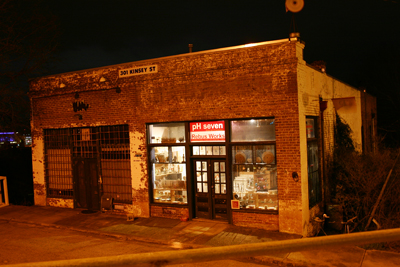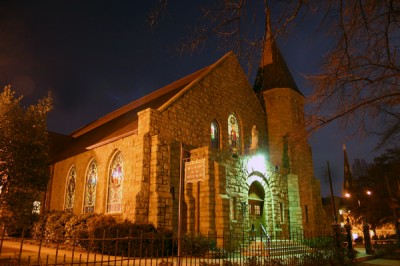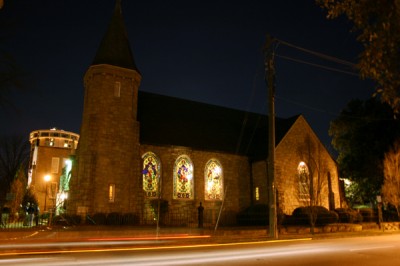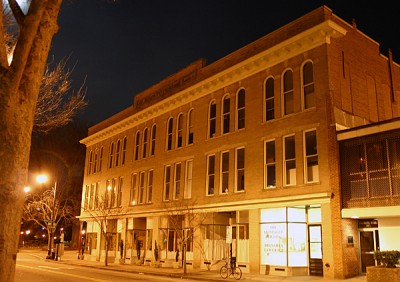Time Traveling to the Thrifty Food Market
Mr. and Mrs. Thomas stand in front of their grocery store, The Thrifty Food Market, in 1972.
A few weeks ago I attended a First Friday event at Rebus Works, a small art gallery in Boylan Heights. As I walked through the crowded room inspecting the artwork, glass of wine in hand, my footsteps across the creaky, worn wood floors started to echo in my ears. The chit-chat of the crowd seemed to fade away, and my mind began to drift back to a time that existed more than 35 years ago when the gallery space was occupied by a neighborhood grocery called The Thrifty Food Market. It was a simpler, different sort of time.
Mr. and Mrs. Thomas had owned and operated the little grocery store at the western terminus of the Martin St. viaduct since 1937. I lived in Boylan Heights for several years in the early 1970s and got to know the Thomases well. They were a kindly older couple whom I always thought of back then as the grandparents of Boylan Heights. In those days I lived with a group of friends in a house that many of our neighbors regarded with disdain as a “hippie house.†But not the Thomases. They took a liking to us, — well, actually, there was no one they didn’t like — and we certainly liked them.
Read more »








 Sign up for the Newsletter
Sign up for the Newsletter